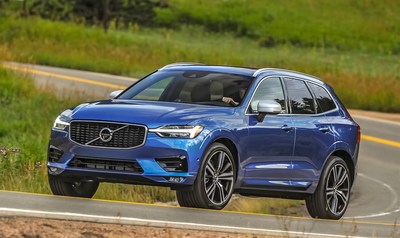Volvo addresses safety, congestion and emissions in new models
By Maureen McDonald
Senior Editor
Michigan Bureau
The Auto Channel
Concerns about safety, congestion and emissions power many decisions made at Volvo Cars, according to Dean Shaw, vice president of corporate communications, at a recent press event in Denver. One big concern is how many people are losing time while stuck going nowhere.
"Most customers tell us they have enough money, but not enough time. Our objective is to give back one week of quality time in the future," Shaw said. Citing research from data giant Inrex Research in February 2017, the cost of getting stuck in traffic reached $295 billion in 2016. This includes the cost to consumers who pay more for freight hauled by trucks caught in endless jam-ups.
What can be done? Shaw believes this is one of the most convincing reasons for autonomous cars. Vehicles shown at the 2015 Los Angeles Auto Show featured the Volvo Concept 26 interior design study that afforded the options of driving or delegating the driving so customers could feel the road, read a book or take a nap. (http://www.volvocars.com/intl/about/our-innovation-brands/intellisafe/autonomous-driving/c26) But that is only one aspect. Shaw said Volvo is dedicated to helping people feel even better getting out of a Volvo than when they get in one. Some current Volvo models offer the option of massaging seats that give several different pressure levels for comforting the back in even the most congested situations. In-car connectivity tools allow for a wide range of options, including from Apple CarPlay, which allows drivers to send and receive messages, get directions and listen to music without taking the hands off the wheel. Many of Volvo’s vehicles are equipped with an available Bowers and Wilkins sound systems that adjusts for a rock concert, symphonic hall or speaking platform.
Emissions remain a key factor as Volvo releases cars with varied power trains, including with only gas engines, as well as plug-in hybrid electric layouts. Several press people participating in the ride and drive through Golden, Boulder and Evergreen, Colorado couldn't tell the difference between one power train or another because of the seamless technology employed.
In July, Volvo announced it would be the first mainstream automaker to forgo using only ankill the internal combustion engine across its entire vehicle lineup. Shaw reinforced the message that models introduced in 2019 and beyond would be electric hybrids or even fully battery- powered. He insisted this was the best way to combat climate change and urban pollution.
"We aren't sacrificing power," Shaw said of Volvo’s current models with hybrid power trains. " The zero to 60 [mph] power is matched only by Porsche."
Safety is the third pillar. Volvo has a goal of reducing deaths and injuries in new Volvo cars to zero by 2020 and believes this is entirely possible thanks to the spa SPA (Scalable Product Architecture) car design that Volvo introduced in 2014, according to Shaw.
The Volvo Scalable Product Architecture (SPA) SPA platform is a Volvo’s global, full-size unibody platform that began with the XC90. Over time, tThe company has invested $90 billion in platforms with varied kinds of steel to protect the driver, support the spine and absorb impact before reaching the driver. The platform is a mix of ultra high strength boron steel and aluminum that forms a crumple zone around the driver.
Volvos have an ever increasing number of safety features in its Intelli-Ssafe technology strategy, including oncoming lane mitigation where the forward-facing cameras reads lane markings, radar assesses critical situation and nudges a driver back into the proper lane, almost like a guiding hand. Autonomous braking -– which started with the XC60 in 2008 – provides an ever-increasing benefit to drivers who may not see an individual or object until it is too late. (http://www.volvocars.com/intl/about/vision-2020/life-saving-innovations)
What's coming next? This fall Volvo will launch a major drive study in its home base of Gothenburg, Sweden, to recruit a wide range of drivers of varied ages and occupations who will give their opinions on the features of fully autonomous cars. Whether it frees up time, what they use the time for, and how it helps prevent accidents will all be studied as part of Volvo’s Drive Me program. The questions asked may lead to more questions, and more after that.
"We want to know what happens to normal drivers when you take away the controls," Shaw added. If vehicles become safer, think of the 1.25 million people killed each year around the world in traffic accidents. How many lives could we save?
"When we look into the future we want to understand our customers better, to make them feel good owning a Volvo," Shaw said.



